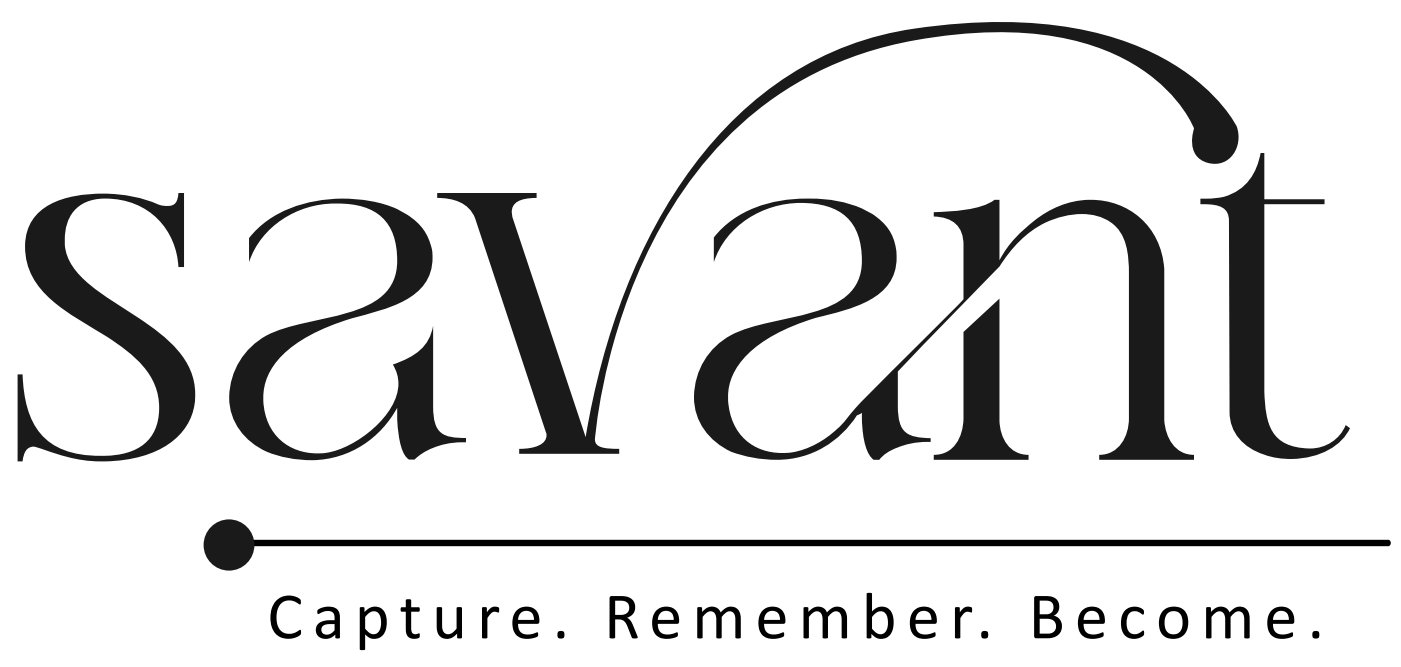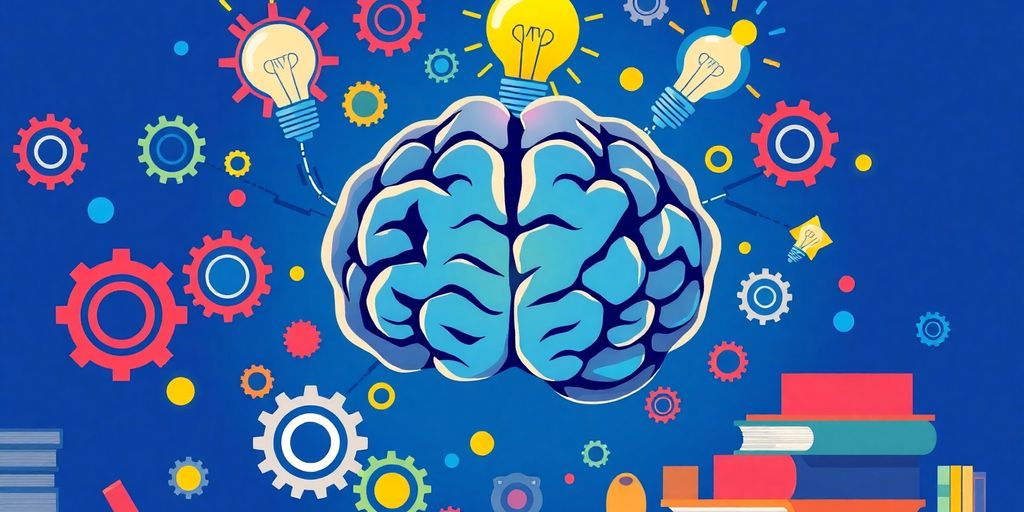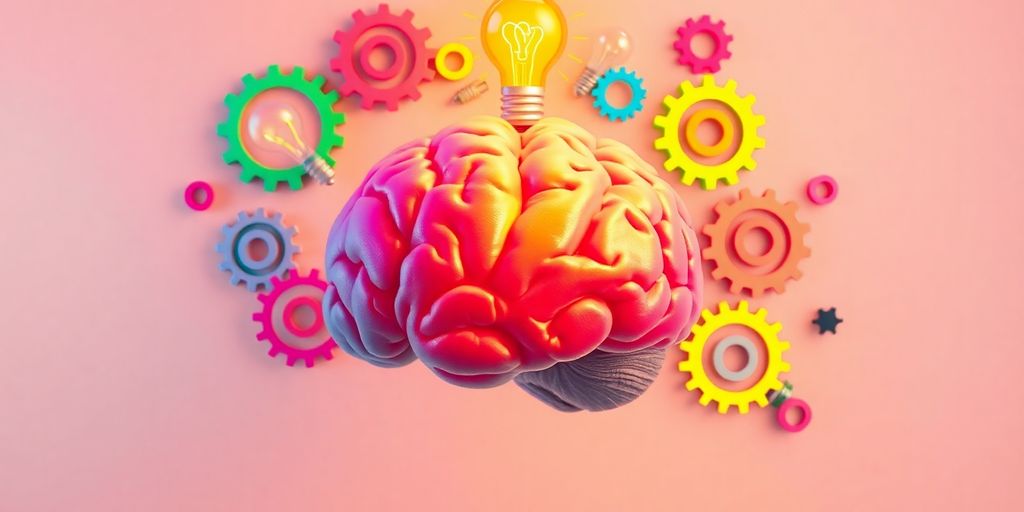Ever wonder just how much of what we learn comes from what we see? It’s a lot! Some folks say about 80% of our learning is visual. Think about it: from the moment we’re kids, pictures, videos, and graphs help us understand the world. This article digs into why visual learning is so powerful and how it plays a big role in education today.
Key Takeaways
- Visual learning is said to account for around 80% of our learning process.
- The brain can recognize images in as little as 13 milliseconds, making visual learning super efficient.
- Using visuals like infographics and videos can boost memory retention and understanding.
- New tech like VR and AR are changing how we learn by making it more interactive.
- Despite its benefits, visual learning must be done right to avoid misunderstandings and keep quality high.
The Power of Visual Learning in Education
Why Visuals Matter in Learning
Visuals play a huge role in how we learn. They’re not just pretty pictures; they help us understand and remember stuff way better. Think about it: when you see a diagram or a chart, it breaks down complex info into something your brain can actually digest. That’s why a significant majority, 65%, of the global population are visual learners, utilizing over 50% of the brain’s surface for visual processing. Visual learning is not just about making things look nice; it’s about making learning effective.
How Visuals Enhance Memory Retention
Our brains are wired to remember images. Studies show that we can recall 65% of visual information even after a few days. Compare that to just 10-20% of written or spoken info, and you see why visuals are key. They help us make connections between ideas, which makes it easier to remember. When you can "see" the info in your mind, it sticks around longer.
The Role of Visuals in Modern Classrooms
In today’s classrooms, visuals are everywhere. Teachers use them to make lessons more engaging and fun. Here’s how:
- Infographics: These turn boring data into cool visuals that are easy to understand.
- Digital Presentations: Tools like PowerPoint mix text, images, and videos to create a richer learning experience.
- VR and AR: Virtual and augmented reality let students explore subjects in a whole new way.
Visual learning isn’t just a trend; it’s a powerful tool that makes education more accessible and engaging for everyone. By incorporating visuals, teachers can break down barriers and reach students of all learning styles.
Exploring the Science Behind Visual Learning
Brain’s Response to Visual Stimuli
Our brains are incredibly tuned to process visual information. In fact, over 50% of the brain’s surface is involved in visual processing. This means when we see something, our brains are working hard, interpreting and storing that data quickly. Imagine being able to recognize an image in just 13 milliseconds! That’s how fast the brain can work with visuals. This rapid processing is why visuals can be so effective in learning. They help us understand and remember information more quickly than text or speech alone.
Visual Processing Speed and Efficiency
Visuals aren’t just fast; they’re efficient. The brain’s ability to process images quickly allows us to grasp complex concepts more easily. When we see a diagram or a chart, our brains can spot patterns and relationships instantly. This kind of processing helps in understanding tricky subjects, especially those involving spatial relationships, like geometry or engineering. It’s like having a mental shortcut that makes learning smoother and more enjoyable.
The Impact of Visuals on Cognitive Development
Visuals play a significant role in cognitive development, especially for young learners. They help in building spatial awareness and problem-solving skills. Kids who engage with visual learning tools often show improved memory and understanding. This is because visual aids make abstract concepts more tangible. They allow learners to "see" the problem, making it easier to solve. It’s not just about making learning fun; it’s about making it effective.
Visual learning is like giving your brain a workout. By engaging with images, diagrams, and other visual aids, you’re not just learning facts—you’re training your brain to think differently.
Visual learning is a powerful tool that taps into the brain’s natural abilities. By understanding how our brains respond to visuals, we can harness this power to improve education and make learning more engaging and effective.
Innovative Visual Learning Techniques
Using Infographics for Better Understanding
Infographics are like the superheroes of the learning world. They take complex data and turn it into something that’s not only easy to understand but also fun to look at. Imagine trying to explain a complicated scientific process using just text—it’s a snooze fest, right? But throw in an infographic, and suddenly, everything clicks. Infographics help students see the big picture and remember details. They’re perfect for summarizing information and making data more digestible.
The Rise of Virtual and Augmented Reality
Virtual Reality (VR) and Augmented Reality (AR) are changing the game in education. These technologies let students step inside a virtual world where they can explore and interact with their environment. It’s like having a field trip without leaving the classroom. Want to walk on the surface of Mars or dive into the depths of the ocean? With VR and AR, it’s possible. These tools make learning immersive and engaging, sparking curiosity and making lessons unforgettable.
Mind Mapping as a Learning Tool
Mind mapping is a technique that helps students organize their thoughts visually. It’s like creating a map of your brain, showing how different ideas are connected. This method is great for brainstorming and planning projects. When students use mind maps, they can see the relationships between concepts, which helps them understand and remember information better. Plus, it’s a creative way to study, allowing students to use colors and images to make their maps unique.
Visual aids like whiteboards, handouts, posters, and images enhance learning by providing accessible information that students can easily absorb and retain.
Incorporating these techniques into the classroom can make learning more dynamic and inclusive. By using these innovative tools, educators can reach students with different learning styles and create a more engaging educational experience. The future of learning is visual, and it’s looking pretty exciting!
Statistics That Highlight the Importance of Visual Learning
Visual Learning and Brain Activity
Did you know that over half of our brain’s surface is dedicated to processing visuals? This isn’t just a fun fact—it means our brains are wired to learn visually. It’s like having a superpower that lets us absorb information quickly and efficiently through images. This natural inclination makes visual learning not just effective but also intuitive.
Retention Rates with Visual Aids
Here’s something that might surprise you: learners retain 65% of visual information even three days later. Compare that to less than 20% for text or audio, and it’s clear why visuals make such a difference in education. This study highlights just how effective visual content can be in making learning experiences stick.
Engagement Levels in Visual Learning
Visuals aren’t just about memory—they’re about engagement too. When students are engaged, they’re more likely to participate and enjoy the learning process. Think about it: would you rather sit through a lecture or watch a video with colorful graphics and animations? It’s no contest. Visual aids make learning more interactive and fun, keeping students interested and involved.
Challenges and Misconceptions in Visual Learning
Common Misunderstandings About Visual Learning
Visual learning is often seen as the magic bullet for education, but there are a few myths that need debunking. One biggie is that visual learning only works for "visual learners." The truth is, everyone can benefit from visuals. They help break down complex info into digestible chunks, making it easier for all types of learners to understand. Another myth is that visuals replace traditional teaching methods. Nope, they should complement them, not replace them. It’s about finding the right balance.
Overcoming Barriers to Effective Visual Learning
Using visuals effectively isn’t just about slapping a chart on a slide. It requires thoughtful integration into the lesson plan. Here’s what educators can do:
- Keep visuals clear and focused. Avoid clutter.
- Make sure visuals directly relate to the topic.
- Use high-quality images and readable fonts.
Visual overload can be a real problem. Too many elements can confuse rather than clarify. Educators should aim for simplicity and relevance.
Ensuring Quality in Visual Educational Materials
Quality matters, big time. Low-quality visuals can be a distraction. Blurry images or tiny fonts are a no-go. To ensure quality:
- Use crisp, clear visuals.
- Choose visuals that enhance understanding.
- Check that all text is legible and contrasts well with the background.
Visuals are a powerful tool, but they need to be used wisely. When done right, they can transform learning experiences, making them more engaging and effective.
For more on busting myths in education, check out this resource discussing how to overcome three prevalent myths in teaching and learning.
The Future of Visual Learning in Education

Emerging Technologies in Visual Learning
The future of visual learning is looking pretty exciting! With tech advancing at lightning speed, we’re seeing some amazing tools come into play. Virtual and augmented reality are no longer just buzzwords; they’re becoming staples in the classroom. Imagine students taking a virtual tour of ancient Rome or exploring the human body in 3D. These immersive experiences can make learning much more engaging and memorable.
We’re also seeing a rise in AI-driven tools that personalize learning experiences. These tools can adapt to how each student learns best, offering visual aids when needed. It’s like having a personal tutor that’s always ready to help!
The Role of Visual Learning in Online Education
Online education is booming, and visual learning is at the heart of it. Videos, infographics, and interactive content are making online courses more engaging than ever. This not only helps keep students interested but also enhances their understanding of complex topics. With more schools and universities offering online classes, the demand for high-quality visual content is only going to grow.
As we move forward, the blend of technology and visual learning will redefine how we approach education, making it more accessible and effective for everyone.
Visual Learning Trends to Watch
Here’s what to keep an eye on in the world of visual learning:
- Interactive Videos: These aren’t your typical videos. They allow students to interact with the content, making the learning process more active.
- Data Visualization: Presenting data in a visual format helps students grasp complex concepts quickly. Expect to see more of this in subjects like math and science.
- Gamification: Turning learning into a game can boost engagement and motivation. Look for more educational games and apps that incorporate visual elements.
The future is bright for visual learning, with endless possibilities for making education more dynamic and effective. As technology continues to evolve, so will the ways we learn visually. It’s an exciting time to be a part of this transformation!
Conclusion
So, there you have it! Visual learning isn’t just a buzzword; it’s a real game-changer in education. With around 80% of what we learn coming through our eyes, it’s no surprise that visuals play such a big role in how we understand the world. From infographics to virtual reality, the tools we have today make learning more engaging and fun. And let’s be honest, who doesn’t remember a cool graphic or a fun video better than a page full of text? By embracing visual learning, we’re not just making education more effective, but also more exciting for everyone involved. So, next time you’re trying to learn something new, maybe give those visuals a shot. You might just find it sticks with you a whole lot better!
Frequently Asked Questions
What is visual learning and why is it important?
Visual learning is a way of understanding information using images, videos, and other visual aids. It’s important because it helps people grasp concepts quickly and remember them better.
How much of our learning is visual?
Experts say that about 80% of what we learn comes from what we see. This shows how important visual aids are in education.
What are some common visual learning tools?
Common tools include infographics, videos, mind maps, and virtual reality experiences. These tools make learning more engaging and easier to understand.
How does visual learning affect memory?
Visual learning helps improve memory by making it easier to recall information. Our brains process and store visual information quickly, which aids in remembering things longer.
Can visual learning help in online education?
Yes, visual learning is very helpful in online education. It makes lessons more interesting and interactive, keeping students engaged and improving their understanding.
What challenges exist with visual learning?
Some challenges include the misuse of visuals, which can confuse students, and the need for high-quality images to ensure clear understanding.






